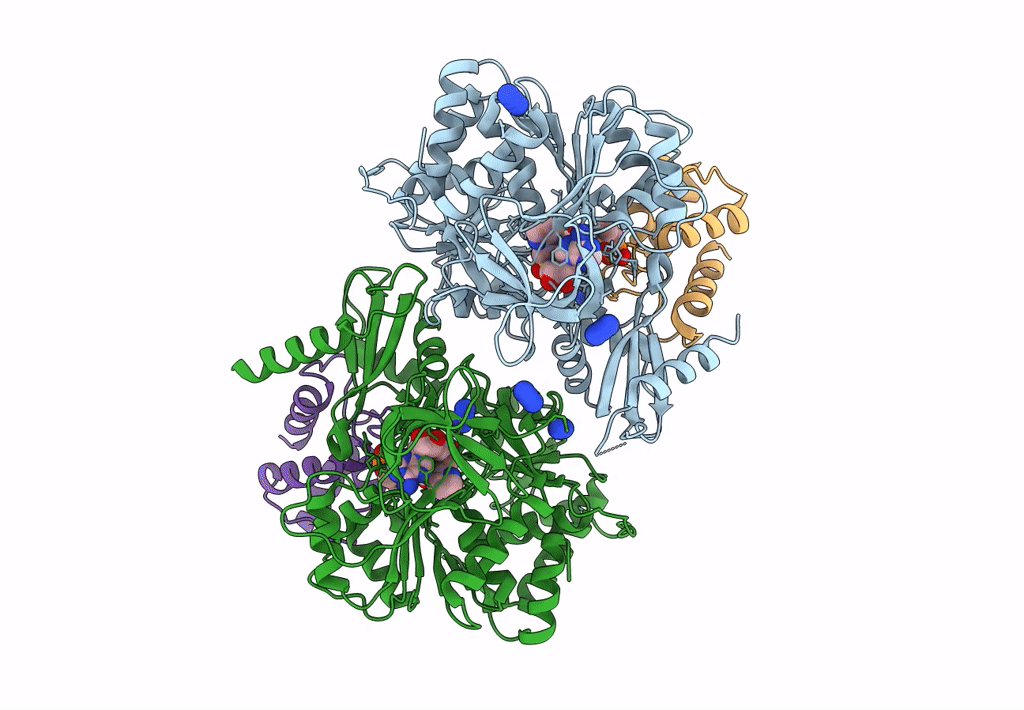
Deposition Date
2022-01-11
Release Date
2022-11-30
Last Version Date
2024-11-20
Entry Detail
PDB ID:
7THQ
Keywords:
Title:
Crystal structure of PltF trapped with PigG using a proline adenosine vinylsulfonamide inhibitor
Biological Source:
Source Organism:
Pseudomonas protegens Pf-5 (Taxon ID: 220664)
Serratia sp. ATCC 39006 (Taxon ID: 104623)
Serratia sp. ATCC 39006 (Taxon ID: 104623)
Host Organism:
Method Details:
Experimental Method:
Resolution:
2.46 Å
R-Value Free:
0.25
R-Value Work:
0.20
R-Value Observed:
0.20
Space Group:
P 21 21 21


